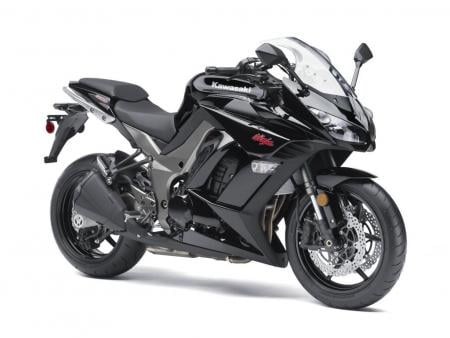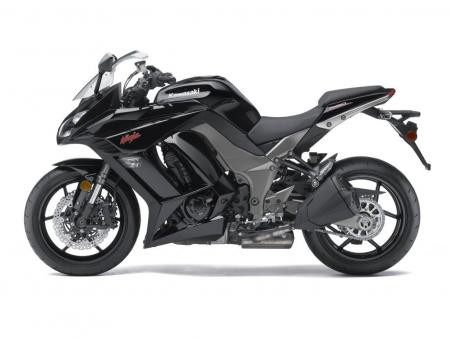 Building on the success of its Z1000 semi-naked sportster, and series of mid-size street-going Ninjas, Kawasaki has announced a 2011 big-bore amalgamation called the Ninja 1000.
Building on the success of its Z1000 semi-naked sportster, and series of mid-size street-going Ninjas, Kawasaki has announced a 2011 big-bore amalgamation called the Ninja 1000.

 The fully-faired machine is essentially a Z1000 with Ninja bodywork. It will share the Z’s counterbalanced engine, six-speed transmission, nearly identical chassis geometry, and upright riding position.
The fully-faired machine is essentially a Z1000 with Ninja bodywork. It will share the Z’s counterbalanced engine, six-speed transmission, nearly identical chassis geometry, and upright riding position.
As the latest iteration of a bike first coined with this name in 1986, it will displace 45cc more than the fire-exhaling 998cc ZX-10R, albeit with 11.8:1 compression ratio, instead of 12.9:1. Its bore and stroke is 77.0mm X 56.0mm, compared to the supersport’s 76.0mm X 55.0mm.
Digital fuel injection via midrange-enhancing 38mm Keihin throttle bodies and oval sub-throttles on the Ninja 1000 will contrast against the ZX-10R’s max-power-augmenting 43mm Keihin throttle bodies, oval sub-throttles and two injectors per cylinder.
Coupled with less aggressive cam profiles, and lacking the ZX’s titanium intake and exhaust valves, the Ninja1000 will redline at 11,000 rpm instead of the ZX’s 13,000 rpm.
The 1043cc powerplant will deliver more torque lower in the powerband, at the expense of ultimate horsepower, while still able to rapidly scream through the rev range until it slams into its soft rev limiter.
When we dyno’d the 2010 Z1000 engine – which on paper is identical – it returned 123.4 hp at 10,250 rpm, and 74.8 ft-lbs torque at 7750 rpm at the wheel. In contrast, the 2010 ZX-10 made 153.2 hp at 12,300 rpm, and 71.6 ft lbs of torque at 9000 rpm.
We’ve enjoyed the 481-lb revised Z1000 since it was introduced, and expect the 503-lb Ninja 1000 will be a similarly potent roadburner. Part of the weight increase consists of about 6 lbs from one extra gallon of fuel. The Ninja 1000 carries 5.0 gallons, compared to the Zed’s 4.0 gallons.
Just as automotive makers do, Kawasaki has tuned the soundtrack to add to the road-going sensory-overloading experience. Dual twin-output Z1000-style exhausts flowing from a catalyzed 4-into-2 system are coupled with functional intake ducts tuned for hi-po harmonics as well. As the Z1000 does, expect it to growl with muted authority at low revs and on the pipe the playback will morph into a subdued but nonetheless feral wail.
Holding it all together is an aluminum perimeter frame with tricks learned from the Z1000 and ZX-10. Wheelbase is 56.9 inches, compared to 56.7 inches for the Z1000, and 55.7 inches for the ZX-10 track weapon.
An inverted 41mm cartridge fork with stepless compression and rebound damping, adjustable spring preload and 4.7 inches of travel provides 24.5 degrees of rake, and trail is ever-so-slightly longer at 4.0 inches compared to the Z1000’s 4.1 inches trail.
In back, a horizontally mounted back-link monoshock, also straight from the Z, is said to help with mass centralization and resist overheating. It is gas/oil damped and the spring preload and rebound damping are adjustable.
Brakes, too, are lifted from the Z1000. In front are twin 300mm petal-style discs with grip applied via four-piston radially mounted calipers. A matching 250mm rear rotor is clamped by a single piston caliper. Tires sizes will be 190/50-17 rear, and 120/70-17 front. They may be Dunlop Sportmaxes like the Z1000 has, or equivalent.
While it is essentially a Z1000 at heart, in the visuals department, its Ninja moniker comes to the fore with looks that are raceresque and aggressive. The blacked-out treatment coupled with black paint as shown is sure to catch the eye on the boulevard.
Instead of the Z1000’s tubular handlebar, the Ninja 1000 is fitted with clip-ons mounted high above the upper triple clamp. This allows the necessary clearance at full lock for the new fairing and provides a comfortably upright rider stance. Having ridden both the ZX-10R and Z1000 extensively, for the sake of riders over six-feet tall, we hope the seat distance aft-wards is less like the Z1000 and more like the ZX-10R, which is generous enough for long-legged riders.
Claimed seat height is 32.3 inches, striking middle ground between the Z1000’s 31.7, and ZX-10R’s 32.7 claimed heights.
This is a bike with much broader focus. It will make light work of all street riding scenarios, and will be capable of doing track days, if not as aggressively as a ZX-10R.
At the same time it could be convertible to a sport tourer for some riders. Its fuel capacity is 25% more than the Z1000’s, which we nevertheless pressed into duty in our oddball sport tourer shootout. With more fuel to feed an engine that ought to deliver economy nearly identical to the Z1000’s 34 mpg observed under hard use, it should be capable of 170 miles per tankful – or better if you don’t ride like a maniac. The MSRP for latest big Ninja is $10,999, a $500 bump from the Z1000’s price, and they will arrive at dealers in late October. In addition to the Ebony color shown, there will be a Candy Fire Red/Ebony scheme.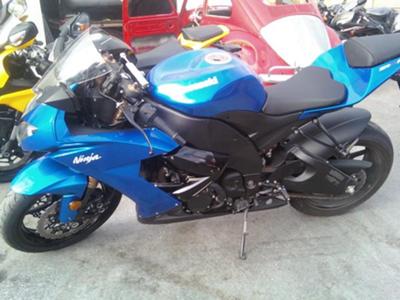



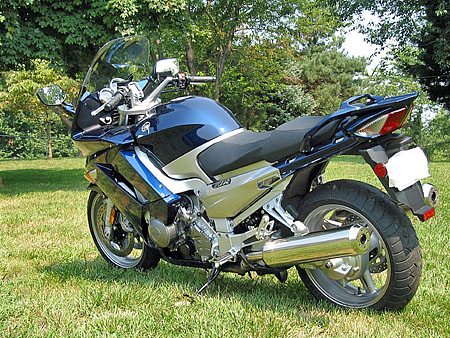


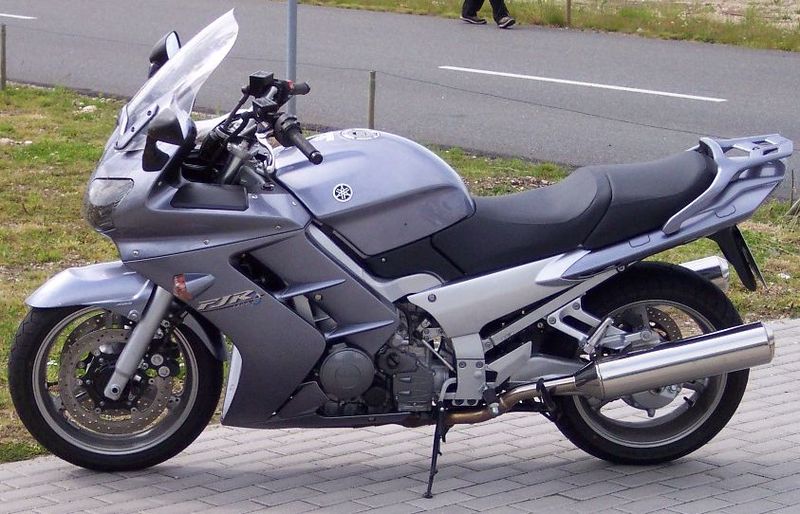





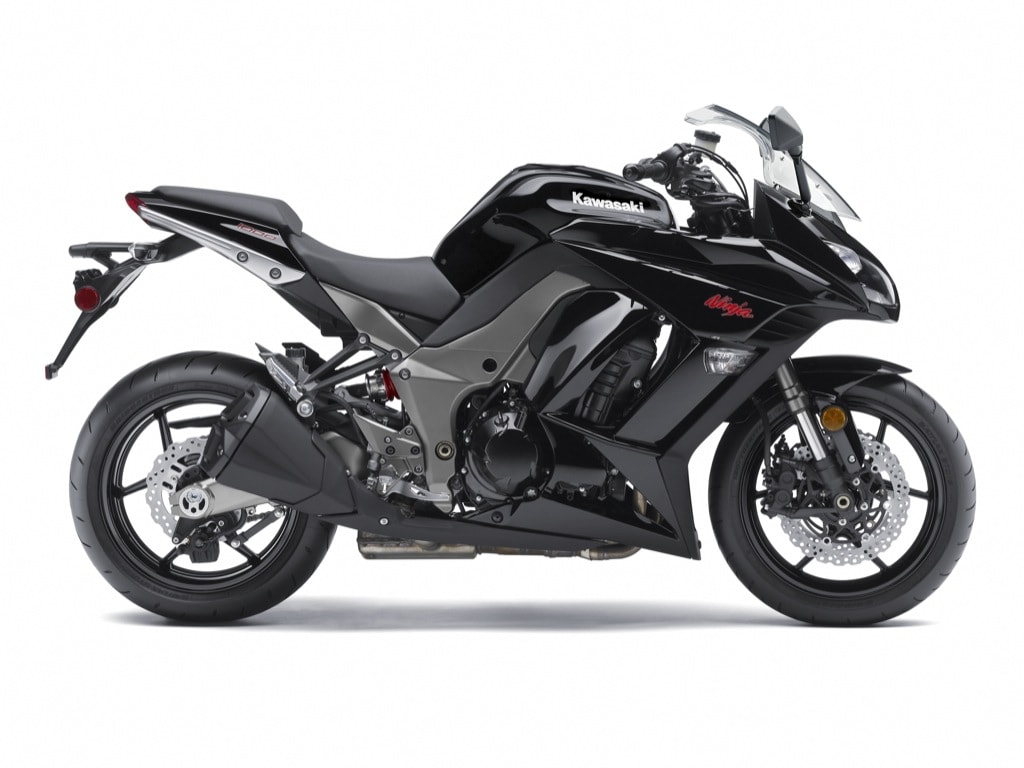




 Building on the success of its Z1000 semi-naked sportster, and series of mid-size street-going Ninjas, Kawasaki has announced a 2011 big-bore amalgamation called the Ninja 1000.
Building on the success of its Z1000 semi-naked sportster, and series of mid-size street-going Ninjas, Kawasaki has announced a 2011 big-bore amalgamation called the Ninja 1000.

 The fully-faired machine is essentially a Z1000 with Ninja bodywork. It will share the Z’s counterbalanced engine, six-speed transmission, nearly identical chassis geometry, and upright riding position.
The fully-faired machine is essentially a Z1000 with Ninja bodywork. It will share the Z’s counterbalanced engine, six-speed transmission, nearly identical chassis geometry, and upright riding position.